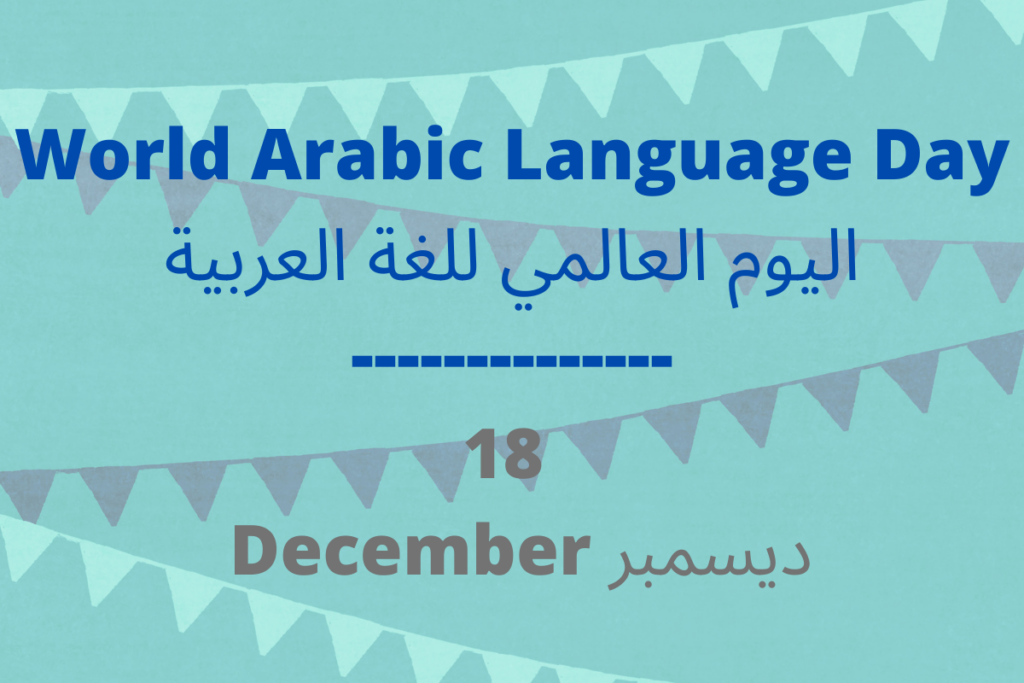The United Nations Educational, Scientific and Cultural Organization (UNESCO) declared 18 December the World Arabic Language Day to celebrate Arabic language, the date on which Arabic became the sixth official language of the United Nations in 1973. Celebrating Arabic language every year is meant to safeguard its rich cultural heritage and promote the cultural diversity.
The World Arabic Language Day (WALD) is commemorated to highlight the catalytic role of Arabic in the European renaissance and the industrial revolution. Arabic promoted the dissemination of Greek and Roman sciences and philosophies to Renaissance Europe. Arab and Muslim scientists had translated the sciences, thoughts, philosophy, civilization, arts and literature of Greeks and Romans into Arabic. The Islamic world then developed many of these texts and made certain advances in scientific fields. They were in turn translated into Latin by scholars during the middle ages and transmitted to the West.
Here are 10 key facts about Arabic language:
- The celebration of the WALD started in 2012: on December 18, 1973, the UN General Assembly decided to make Arabic one of its official languages at the UN. In 2012, the UNESCO decided to celebrate the WALD on the same day.
- Arabic language is one of the most widely spoken languages in the world: it is spoken by over 420 million people in the Arab world and by more than 130 million people as their second language. It is the sixth most spoken language in the world.
- It is the liturgical language in many churches in the Arab world: this means that Christian rituals are celebrated there in Arabic. Also, a significant part of the Jewish cultural and religious heritage was written in Arabic.
- It is the language of rituals for over billion Muslims around the world: prayer and other rituals in Islam are conducted in Arabic. Arabic words can be found in languages spoken by non-Arab Muslims. It is one of the most spread languages in the world because of being the language of the Qur’an, the Muslim holy book and divine revelation.
- It is spoken by nearly 66 states in the world: it is the official language in all the Arab countries and other countries in the Asian and African continents such as Iran, Turkey, Chad, Mali, Eritrea and Cameroon wherein there are many Arab tribes and communities.
- It is the sixth official language in the United Nations: the UN General Assembly decided in 1973 to make Arabic one of its official languages after a proposal of Morocco and Saudi Arabia.
- It has a unique sound that does not exist in any other language (Ḍād)[ض]: it is the fifteenth letter of the Arabic alphabet. It is very unusual to speakers of European languages. It can be described as a very strongly pronounced “D”. For this reason, Arabic is called “the language of the Ḍād”.
- The Arabic alphabet is used by many other languages such as Persian and Urdu: speakers of unwritten languages used Arabic alphabet in the past to write their mother tongue, given that Arabic was their second language or the only codified language they knew.
- Arabic consists of 16.000 roots, against 700 roots in Latin: It is noteworthy that words in Arabic are derived from roots that are usually a combination of three letters. According to some sources, Arabic has 12.3 million words, while English consists of 600.000 English words.
- Arabic language is not coping with technology: it faces this challenge because of insufficient translations in the Arab countries. Also, scientific terms could not be unified throughout the Arab countries.
***
You can read this article in Arabic here and check the sources used at the end of the Arabic article.

Very interesting facts ! it is about time we start celebrating the WALD.